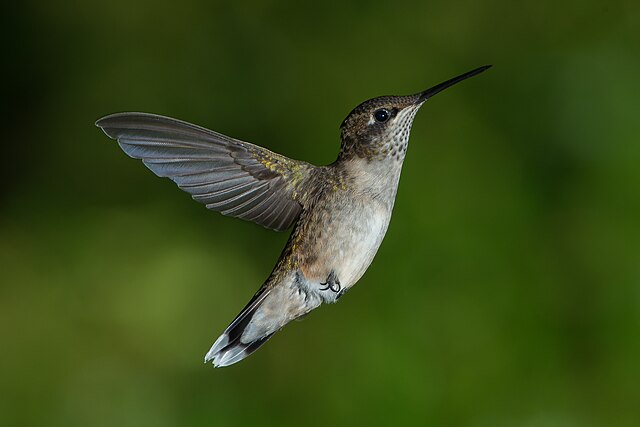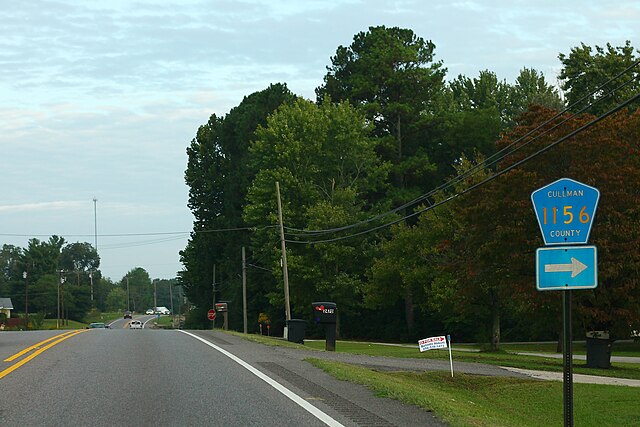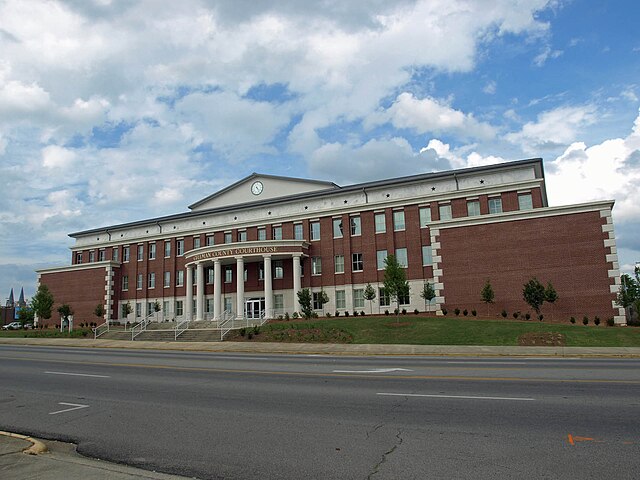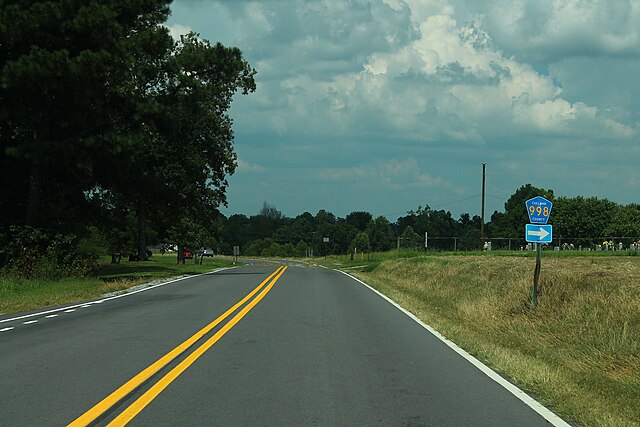Ever wondered what it’s like to experience the weather in Cullman, Alabama? Picture this: you’re sipping sweet tea on a porch, the air thick with summer humidity, or maybe you’re bundled up, watching a rare snowflake drift down in winter. Cullman’s weather is a fascinating mix of Southern charm and unpredictable twists, making it a topic worth diving into. Whether you’re a local planning your week or a visitor curious about what to pack, understanding Cullman’s climate is key to thriving in this vibrant community. Let’s take a deep dive into what makes Cullman’s weather tick, from sunny days to stormy nights, and everything in between.
Why Cullman’s Weather Matters
Cullman, nestled in the heart of North Alabama, isn’t just another dot on the map. Its weather shapes everything from daily routines to major events like Rock the South, a music festival that draws thousands each year. The climate here influences how residents garden, what businesses thrive, and even how the community prepares for natural events. Knowing the ins and outs of Cullman’s weather patterns can help you plan better, stay safe, and make the most of this charming Southern town. So, what’s the weather like in Cullman, and why should you care? Let’s break it down.
The Basics of Cullman’s Climate
Cullman sits in a humid subtropical climate zone, which is a fancy way of saying it gets hot and sticky in the summer, chilly in the winter, and a whole lot of rain throughout the year. Think of it like a climatic rollercoaster—there’s always something new around the corner. Average temperatures range from the low 30s in January to the high 80s in July, but don’t let those numbers fool you. Extremes can hit, and when they do, you’ll want to be ready. Precipitation is another big player, with Cullman seeing about 55 inches of rain annually. That’s more than the national average, so umbrellas are a local’s best friend!
What’s a Humid Subtropical Climate?
Imagine stepping outside and feeling like you’re wrapped in a warm, wet blanket—that’s a humid subtropical climate in a nutshell. Cullman’s location in Alabama means it gets distinct seasons, but the humidity is a constant companion. Summers are long and steamy, winters are short but can pack a punch, and spring and fall are transitional seasons that bring their own surprises. This climate type is why Cullman’s landscapes are lush and green, but it also means you’re never far from a thunderstorm or a muggy afternoon.
Seasonal Weather Patterns in Cullman

Cullman’s weather is like a four-act play, with each season bringing its own personality to the stage. From blooming springs to frosty winters, let’s walk through what you can expect throughout the year.
Spring: A Time of Renewal and Rain
Spring in Cullman is like opening a window after a long winter. March through May brings temperatures ranging from the mid-50s to the mid-70s, with flowers blooming and festivals popping up. But here’s the catch: spring is also prime time for rain and thunderstorms. April alone can see up to 5 inches of rain, and severe weather alerts aren’t uncommon. Posts on X have noted special weather statements for Cullman in spring, like the one from @NWSHuntsville on June 19, 2025, warning of storms in the area. So, while you’re enjoying the azaleas, keep an eye on the sky!
Tips for Spring in Cullman
Want to make the most of spring? Pack a light jacket and waterproof boots. Check local weather apps before heading to outdoor events like the Cullman Strawberry Festival. And if you’re a gardener, spring’s warm soil is perfect for planting, but watch out for late frosts that can sneak in during March.
Summer: Hot, Humid, and Happening
Summer in Cullman is like stepping into a sauna. June through August sees temperatures climbing into the high 80s and low 90s, with humidity that makes it feel even hotter. It’s the season of pool parties, barbecues, and Rock the South, but it’s also when thunderstorms roll in with gusto. Severe thunderstorm warnings, like the one posted by @WBRCnews on June 15, 2025, are common, bringing heavy rain and occasional hail. If you’re planning a summer adventure, hydration and sunscreen are non-negotiable.
Beating the Summer Heat
How do locals survive the swelter? They embrace it! Head to Smith Lake for a cooling dip, or visit local spots like the Ave Maria Grotto during early morning hours. Always carry water, and if you’re attending outdoor events, seek shade whenever possible. Pro tip: lightweight, breathable clothing is your summer MVP.
Fall: Crisp Air and Colorful Leaves
Fall is Cullman’s golden child. September through November brings cooler temperatures, dipping from the 80s to the 50s, and a stunning display of autumn foliage. It’s the perfect time for hiking at Hurricane Creek Park or enjoying the Cullman County Fair. Rainfall tapers off a bit, but don’t put away that umbrella just yet—October can still bring surprise showers. Fall’s mild weather makes it ideal for outdoor activities, but it’s also a time to start preparing for winter’s chill.
Fall Activities to Try
Ready to fall in love with Cullman’s autumn? Visit local pumpkin patches or take a scenic drive along Highway 157 to soak in the colors. Fall is also a great time to explore Cullman’s historic downtown, where cooler evenings make strolling a delight. Just keep a light sweater handy for those crisp nights.
Winter: Chilly Days and Rare Snow
Winter in Cullman is like a quiet guest who doesn’t overstay their welcome. December through February brings temperatures in the 30s and 40s, with occasional dips into the 20s. Snow is rare but magical when it happens, turning Cullman into a winter postcard. Ice storms are a bigger concern, though, and can make roads tricky. Winter is also the driest season, with rainfall dropping to about 4 inches per month. Bundle up and enjoy cozy evenings at local spots like the Cullman Civic Center.
Preparing for Winter Weather
Winter may be mild, but it’s not without surprises. Keep your car stocked with an emergency kit in case of icy roads. For home prep, insulate pipes to prevent freezing, and consider a space heater for those extra-cold nights. And if snow does fall, grab a camera—those rare flakes are Instagram gold!
Severe Weather in Cullman: What to Expect

Cullman’s weather isn’t all sunshine and rainbows. The region is no stranger to severe weather, especially during spring and summer. Tornadoes, thunderstorms, and flooding can pose risks, so understanding these events is crucial for safety.
Tornadoes: A Real Threat
Alabama is part of “Dixie Alley,” a region prone to tornadoes, and Cullman is no exception. Spring and early summer are peak tornado season, with powerful storms capable of causing significant damage. The National Weather Service frequently issues alerts, like the special weather statements for Cullman posted by @NWSHuntsville in June 2025. Having a plan—whether it’s a storm shelter or a safe room—is a must for every household.
Staying Safe During a Tornado
What’s the game plan when a tornado warning hits? Head to an interior room on the lowest floor, away from windows. Keep a battery-powered radio or weather app handy to stay updated. Local schools and businesses often conduct tornado drills, so it’s wise to familiarize yourself with community safety protocols.
Thunderstorms and Flooding
Thunderstorms are a regular feature in Cullman, especially in summer. They bring heavy rain, lightning, and sometimes hail, as noted in a severe thunderstorm warning from @simpsonWVTM13 on June 15, 2025. Flash flooding can occur, particularly in low-lying areas, so avoid driving through flooded roads. The phrase “turn around, don’t drown” is a lifesaver here.
Flood Preparedness Tips
How do you stay one step ahead of flooding? Elevate valuables in your home, especially if you live near a creek or river. Check local drainage systems and report clogs to the city. And always have a go-bag ready with essentials like food, water, and important documents in case evacuation is needed.
How Weather Shapes Cullman’s Lifestyle
Cullman’s weather isn’t just something to talk about over coffee—it’s a driving force behind the community’s way of life. From agriculture to festivals, the climate plays a starring role in what makes Cullman, well, Cullman.
Agriculture and Gardening
Cullman’s fertile soil and ample rainfall make it a haven for farmers and gardeners. The county is known for its strawberries, peaches, and sweet corn, all thriving thanks to the warm, wet climate. But unpredictable weather, like late frosts or heavy rains, can challenge crops. Local farmers rely on weather forecasts to plan planting and harvesting, and home gardeners follow suit, using raised beds to combat flooding.
Gardening Tips for Cullman’s Climate
Want to grow your own food or flowers? Choose plants that love humidity, like tomatoes or hydrangeas. Invest in good drainage systems to handle heavy rains, and consider a greenhouse for year-round gardening. Local extension services offer free advice, so don’t hesitate to reach out!
Festivals and Outdoor Events
Cullman’s calendar is packed with outdoor events, but the weather can be a wild card. Rock the South, held in summer, often faces heat and storms, requiring organizers to have backup plans like cooling stations and rain delays. The Cullman County Fair in fall benefits from milder weather, but early planning for rain is a must. Always check the forecast before heading out, and pack accordingly!
Weather Forecasting Tools for Cullman Residents
In a place where the weather can change faster than a Southern drawl, staying informed is key. Thankfully, modern technology makes it easier than ever to keep up with Cullman’s forecast.
Best Apps and Websites
Apps like AccuWeather and Weather Underground offer detailed forecasts for Cullman, including hourly updates and severe weather alerts. The National Weather Service’s website is a goldmine for real-time data, and local news outlets like The Cullman Tribune provide updates on events like road resurfacing or festival plans that might be affected by weather. Social media, especially posts from @NWSHuntsville, is another great way to stay in the loop.
Why Local Forecasts Matter
Ever noticed how a forecast for Birmingham doesn’t always match Cullman’s weather? That’s because local topography, like the rolling hills and proximity to Smith Lake, can create microclimates. Stick to Cullman-specific forecasts for the most accurate info, and consider investing in a home weather station for real-time backyard data.
Climate Change and Cullman’s Future

Let’s talk about the elephant in the room: climate change. Cullman’s weather is already showing signs of shifting, with hotter summers, wetter springs, and more intense storms. What does this mean for the future, and how can the community adapt?
Rising Temperatures and Extreme Weather
Studies suggest Alabama could see temperature increases of 2-4°F by 2050, making Cullman’s summers even more intense. Extreme weather events, like tornadoes and floods, may become more frequent, as noted in climate journals like Weather. Residents can prepare by investing in energy-efficient cooling systems and reinforcing homes against storms.
Community Adaptation Strategies
Cullman’s already taking steps to adapt. The city invests in drainage improvements to combat flooding, and local organizations promote sustainable practices like tree planting to reduce heat. You can do your part by conserving water, supporting local farmers, and staying informed about climate initiatives.
Conclusion
Cullman’s weather is as dynamic as the community itself, offering a mix of sunny days, stormy nights, and everything in between. From the humid summers to the crisp fall evenings, understanding the climate helps you live, work, and play smarter in this Alabama gem. Whether you’re planning a garden, attending a festival, or just trying to stay safe during a storm, a little weather know-how goes a long way. So, grab that umbrella, check the forecast, and embrace all that Cullman’s weather has to offer. What’s the forecast for your next adventure in Cullman?
FAQs
1. What’s the best time of year to visit Cullman?
Fall (September to November) is ideal, with mild temperatures and beautiful foliage, perfect for festivals and outdoor activities. Just pack a light jacket for cooler evenings!
2. How often does Cullman get tornadoes?
Tornadoes are most common in spring and early summer, with Cullman seeing a few each year. Always have a safety plan and monitor alerts from sources like the National Weather Service.
3. Does it snow a lot in Cullman?
Snow is rare, happening maybe once or twice a winter, and usually light. Ice storms are a bigger concern, so prepare for slippery roads.
4. How can I stay safe during Cullman’s thunderstorms?
Stay indoors, avoid flooded areas, and keep a weather app handy. If driving, pull over during heavy rain and never cross flooded roads.
5. Are there any local resources for weather updates in Cullman?
Yes! Check The Cullman Tribune, follow @NWSHuntsville on X, or use apps like AccuWeather for real-time updates tailored to Cullman.

